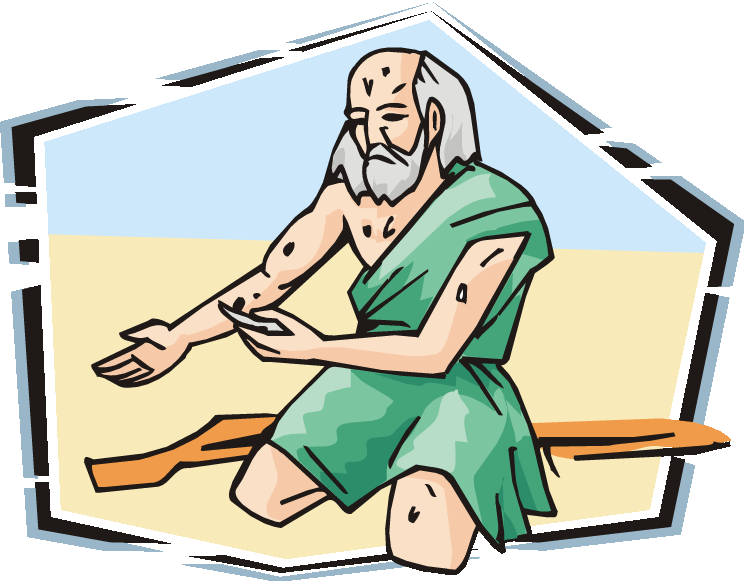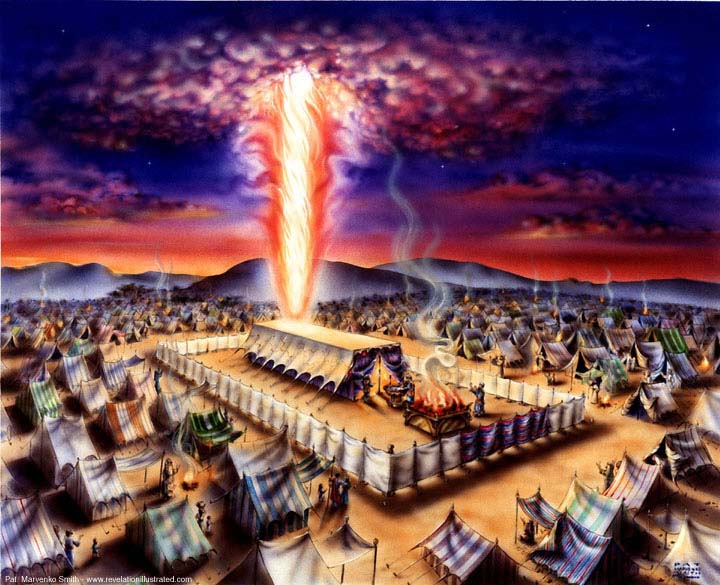The Book of Job is a classic and age old story of religious “experts”, who are actually fools, clashing with the Truth of who Elohim really is. From time immemmorial, finite man has been trying quantify the Creator and stuff him into boxes that can be labeled and marketed for personal gain and glory. Most churches, denominations, seminaries and religious movements are guilty of this. Elohim is much bigger than this and refuses to play this silly and childish game as the Book of Job reveals. He is who he is and he is infinite and his ways are beyond man’s ability to understand. So just shut up, accept him in faith, worship and obey him knowing that he loves you and has your best interests in mind. When you walk with him, no matter what you have to go through, he will lead you to the other side and bless you immensely.
The Book of Job—A New Perspective on Life!

Written on January 12, 2024 in Wilhelmina Bay, Antarctica
What are the main themes and takeaway lessons from the seldom read book Book of Job? There are several. But recently while cruising in the waters of the Antarctic Peninsula with my Bible open to the end of this interesting book about a man who lost everything and was trying to figure it all out, I experienced a eureka moment in my understanding as to the deeper meaning of this somewhat enigmatic book.

While viewing the unspeakably beautiful and endless whiteness of that spectacularly majestic continent just a few feet outside my stateroom balcony door, my heart and mind were transported to another place not only physically but also spiritually. From that vantage point in time and space against that backdrop of this seemingly infinite and mysterious landmass, I suddenly viewed Job in a new light. He was a man searching for answers to the perennial conundrums of life that have perplexed humans from day one. How did the Antarctic trigger this spiritual connection? As a finite being myself briefly travelling through the Antarctic, while trying to take in sights I had never seen before and comprehend the infinite whiteness unfolding before me, it came to me that I was in a similar place as that of Job and his three friends thousands of years trying to comprehend things that were beyond their ability to do so. Who are we in this vast cosmos on a spaceship called earth, and where to we fit in to the big scheme of things?
It is clear from reading this book that Job is trying to understand the ways of Elohim and answer the unanswerable questions that have perplexed and plagued men’s hearts and minds from the beginning. These perennial conundrums that most thinking humans attempt to answer are: What is the meaning of life? Why am I here? Where am I going? What is the significance of good versus evil and where does man figure into this paradigm? Why do bad things happen to ostensibly good people? If there is a good God, then why is there suffering and evil in the world? With man’s intellect, Job and his “friends” attempt but fail to answer these enigmatic questions. The answer comes from two unexpected sources.
After Job and his three friends have exhausted themselves arguing back and forth trying to answer these perplexing questions, Elihu, a young man who may be short on years but is long in wisdom and understanding, enters the scene. He takes the discussion in a different direction and to a higher level and leaves the others behind to wallow in the dust of the futility of their supposed intellect and self righteousness. He asserts the righteousness and superior intellect and wisdom of the Creator. Elihu’s input sets the stage for what happens next.
Suddenly and without warning or man’s permission, the Sovereign Creator of the universe and all that is therein unexpectedly manifests himself in the physical realm in a whirlwind. This whirling windstorm can either be interpreted literally, or it can be viewed as a poetic metaphor symbolizing the whirlwind of human emotions and mental circumambulations. Perhaps both interpretations are correct. Certainly the Creator could have used a literal tornado to punctuate the situation and to demonstrate his power. He used a similar but opposite demonstration later on with Elijah in the cave on Mount Sinai. Whatever the case, what message was YHVH Elohim in this most demonstrative manner attempting to convey to Job and his friends?
One things is evident from YHVH Elohim’s uninvited intervention into the affairs of men. After capturing and then demanding man’s attention, he asks a series of questions. Through this, he is signaling to man an important message. He is telling his human clay creations that “I need neither man’s invitation nor his permission to do anything anywhere to anyone whenever it pleases me or suites my sovereign and mysterious purposes to do so.” Then for four chapters Yehovah Elohim commences to give his earthlings an instructive lesson that is intended to squelch all human reasonings and debates proffered thus far in the Book of Job pertaining to the ways, whys and wherefores of the Creator.
During the Almighty’s monologue, interestingly YHVH totally ignores Job’s three foolish friends as if to say your comments are not even worthy of my time. “The reasonings and theological philosophies of men are foolishness to me, so off with you!” Then in Job chapter 42, YHVH gives these three men a quick nod by demanding that they repent of their sin of misrepresenting the Creator through their pretend wise, yet foolish words.
As far has YHVH’s response to Job is concerned, to our Western logic-based mindset where four must irrevocably follow the question, “What is two plus two?” it seems aloof and appears to miss the mark of man’s inquiry as to the meaning of life and the perennially nagging and unanswered questions that have plagued men forever. So what is the deciphered meaning of YHVH’s non-answer answer to righteous Job who is the undisputed apple of his eye above all other humans on earth? Simply this: Your finite mind is incapable of understanding the Infinite, so stop attempting to do so with your foolish, pea brains. Moreover, in an indirect way that often befuddles our Western syllogistically based logic, YHVH is telling Job that if you cannot even answer the most basic questions about the animals of my creation, how do you expect to answer the complex questions pertaining to the higher life forms called humans. And if you cannot answer these questions, then how can you even begin to comprehend the Infinite Creator of it all? Therefor, put your hand over your mouth (translated: “Shut up!”), stop trying to quantify the unquantifiable and label that which can neither be described nor put into neat labeled boxes by humans. If humans can put Elohim into a box, it simply means that they can then label that box, package it with a colorful and attractive wrapping and then market it to other humans for their own profit and glory. The Creator says, “Away with this nonsense!”, for he refuses to play these silly sandbox mind games invented by his puny and ridiculous children, who are trying to play god to other humans for their own selfish ends!

This, I humbly submit, is one the greater messages of the Book of Job which I ascertained while observing the endless, seeming infinite, and majestic white expanses of the Antarctic contrasted with my own finiteness, limitations and lack of understanding of much about this continent and life in general. Viewing such extraterrestrial and surreal scenes while studying the Bible tends to transports one to a different place spiritually as it opens up new perspectives and vistas. One quickly sees how small man is and how great the creation of this earth is and, by extension, how great the Creator is. Can I understand the mysteries of the Antarctic such as how the ice that is sometimes miles thick was formed, how old the ice is whether thousands or millions of years old, the movement of glaciers, the death-defying coldness of that region, or how the sea life survives in such an inhospitable environment? No. So like Job, since I cannot even answer some of the most basic question about how life works on this earth, much less the ways of YHVH Elohim, I humbly put my hand over my mouth and just trust that my Father in heaven has it all figured out and that things will work out for me for my ultimate good and betterment, as they did for Job. I have faith that YHVH loves me and that he is all powerful. What more is needed?





Exodus 25 and the Grander Picture of the Tabernacle of Moses and Man’s Ultimate Destiny

This section of the Torah (Parashah Terumah or Exodus 25:1–27:19) contains YHVH’s instructions to Israel to build a tabernacle or sanctuary so, in his own words, “I may dwell among them” (Exod 25:8). Is this some quaint, archaic and irrelevant historical event that occurred millennia ago, or is there a larger prophetic picture here that points to something much grander that relates to you and me? The answer to the latter question is a most definite and emphatic, “Yes!”
For historical context, YHVH created man in his image for the purpose of raising up a family of glorified sons and daughters to become like him and to live with him forever in a glorified and elevated state of existence. To that end, he placed the first humans in an idyllic garden where he could walk and commune with them in the cool of the day—symbolic of a state of restful or comfortable and relaxed communion. Sadly, this one-on-one relationship did not last long, and man was thrust out of the garden (symbolic of YHVH’s dwelling place on earth) because of sin and the lack of man’s holiness without which no man can come into the presence of Elohim.
Some 3,500 years later in the time of Moses, we find YHVH instructing the Israelites to build a another dwelling place for him that he might abide with his people once more. Instead of a garden, it is a house. In the Tabernacle of Moses, the holy of holies was the one spot where YHVH desired to dwell on earth again with his human children.
But there is one caveat. One cannot merely go tramping casually or cavalierly into the holy presence of YHVH in a state of sinful impurity or unholiness. There is a process of spiritual cleansing that must first occur and the tabernacle (along with the seven biblical feasts) reveals that seven step process, which is YHVH’s plan of redemption or salvation for man.
The tabernacle is a symbolic and metaphorical picture of this process as well as a picture of Yeshua who is the way. Amazingly, the tabernacle is also a picture of each of us, who must follow Yeshua step-by-step if we are to come into the presence of our holy (pure and sinless) Heavenly Father.
To be sure, YHVH desires a personal relationship not only with corporate Israel, but with each of us individually well. The nation of Israel is comprised of individual entities each with his and her own relationship with the Creator. Coming into the inner sanctum of the holy of holies in the tabernacle (representative of YHVH’s heavenly throne room) should be the ultimate goal of each person. YHVH’s desires and plan is to lead us into his presence by way of Yeshua his Son, who is the way, the truth and the life and the only way to the Father.
This process of spiritual cleansing begins to occur when we come to faith in Yeshua, repent of our sin and then allow the Holy Spirit to begin a work on the inside of each of us. The tabernacle is the gospel tract that outlines the progressive steps in this cleansing process. Moreover, the tabernacle outlines the steps required for the indwelling presence of YHVH’s Spirit which activates our personal spirit thus drawing us upward to himself. As such, we become a living Tabernacle of Moses or, as Paul characterizes it, a temple of the Holy Spirit.
To the degree that we allow YHVH to work in us, to cleanse and refine us, is to the degree that we advance along the progressive steps upward toward our Father in heaven as outlined in the Tabernacle of Moses.
If we will be honest with ourselves, most of us are not as far along in this process as we esteem ourselves to be. There for YHVH’s grace go all of us! But at least we have the road map of the tabernacle to show us the way onward and upward. There are no shortcut to Elohim, and this journey will take a lifetime, and even then, we will still need the grace of Elohim as well as the imputed righteousness of Yeshua to make up the lack of how far we fall short of “the mark for the prize of the high calling of Elohim in Messiah Yeshua” (Phil 3:14). This is because the righteous are scarcely saved (1 Pet 4:18), and all of our righteousness is as filthy rags (Isa 64:6). When we finally come to this realization and humble ourselves before YHVH Almighty and allow him to begin cleaning us spiritually (a process called “sanctification”) from the inside out, it is then that he can begin his work in us and lift or raise us up (Jas 4:10) to seat us in heavenly places with Yeshua (Eph 2:6). It is then that we will be fully born again as new, glorified and immortalized children of Elohim and adopted into his eternal family.
This is the ultimate message of the entire Bible of which the Tabernacle of Moses is an illustrative, symbolic and prophetic depiction that even a child can visualize. Sadly, it is also a truth and message that churchianity has largely overlooked!
Now let’s take this whole discussion one step further and to yet a higher level…
Exodus 40:2–7, Set up the tabernacle. YHVH’s instructions to Moses to set up the furnishings in the tabernacle followed a particular order. In fact, if one traces Moses’s footsteps in doing so, it forms an interesting geometric pattern that is highly significant spiritually. Let’s explore this.
In placing the furnishings in the tabernacle, Moses first started in the holy of holies where he set up the ark of the covenant. After this, he went into the holy place and over to the right west side where he set up the table of show bread. He then moved across to the left or east side of the holy place and set up the menorah. Next, he moved to the center of the holy place in front of the curtain or veil separating the holy place from the holy of holies where he set up the altar of incense. After this, Moses made a straight line and exited out of the tabernacle itself into the outer courtyard where he set up the altar of sacrifice. Having done this, Moses then set up the bronze laver, also in the outer courtyard just in front of the door leading into the tabernacle. If you trace Moses’ steps and make a line in the dirt, what is the outline?
The outline of Moses’ movements makes a triangle on a cross with the base of the triangle forming the arm of a cross. The base of cross corresponds to the altar of sacrifice, while apex of the triangle corresponds to the altar of incense and the top of the cross, which extends past the apex of the triangle is where the testimony in the holy of holies is. Why did YHVH instruct Moses to set up the tabernacle’s furnishings in this order, and not another order? What is the spiritual significance of this particular pattern? How does it relate to you and me? Let’s unpack this.
The base of this arrow is at the altar of sacrifice representing Yeshua’s death on the cross atoning for our sins. Next, the arrow points us to the bronze laver picturing a believer’s next step in his spiritual walk which is baptism for the remission of sins and legally identifying with Yeshua’s death, burial and resurrection, as well as receipt of Elohim’s Set-Apart Spirit and the washing of our lives by the water of the Word of Elohim. Next we come to the menorah picturing the Spirit of life in Yeshua the Messiah as the new believer begins to manifest evidence of the redeemed life, which is the fruit and gifts of the Spirit, which shine like a light into the dark world around us. Next we come to the table of the showbread picturing the regathering and unification of the tribes of Israel around the table of Yeshua’s body in sweet fellowship and covenantal relationship. Through the Messiah of Israel, the scattered tribes, along with those Gentiles who have been grafted into the tribes of Israel, will be regathered. After this regathering, the tribes will move together and in one accord to the place in the tabernacle of pray and worship which is the altar of incense as they prepare to enter into the eternal kingdom of YHVH Elohim’s presence as pictured by the holy of holies under the glory cloud of YHVH himself.
The way to Elohim through Yeshua the Messiah is laid out in the Tabernacle of Moses making the outline of a cross and an arrow that points heavenward. By starting in holy of holies and going outward toward the altar of sacrifice, this is a clear message that heaven is reaching downward toward sinful man and inviting him to come up to meet his Father in heaven by way of the cross of Yeshua the Messiah.
Conversely, when the tabernacle is viewed from the outside looking in, it is showing man the way upward to the Father through Yeshua the Messiah. So as there are humans who are seeking the way upward, at the same time, our Father in heaven is reaching downward beckoning his wayward children back to him.
This demonstrates to us that the tabernacle is, in reality, a giant gospel tract that shows sinful man the way of salvation leading to his glorification as immortal sons and daughters of YHVH Elohim, our Father in heaven. As we read in Psalms,
Your way, O Elohim, is in the sanctuary; who is so great a El as our Elohim? (Psalm 77:13)
Antarctica & the Upward Call to Exceptionalism
My recent voyage to Antarctica was like a trip to another planet. It was a surreal, unearthly place that because of its pristine beauty and vast stretches of whiteness with the glaciated mountains and icebergs transports one to a different realm physically, emotionally, psychologically and even spiritually. Antarctica is almost a holy, even a godly place because it is largely untouched and untainted by sinful man. The message of this video was birthed in the Antarctic as a result of some transcendent thoughts that came to me while there concerning the higher walk to which Yeshua is calling us. May this message edify, bless and encourage the listener onward and upward!
Exodus 25:1—27:9 Parashat Terumah (A Gospel-Oriented Torah Study)
This is a gospel-oriented Torah study. Our goal is to connect the good news of Yeshua the Messiah (the gospel message) to its Hebraic, pro-Torah roots or foundations. The information given here is more than head knowledge. Understanding and wisdom (the right application of knowledge that is based on truth) is taught thus making biblical truth practical, relevant and applicable to your daily life. The truths of the Bible not only have the power to transform your life here and now for the better, but eventually to take you past the veil of death and into eternity.
This Torah study is subdivided in sections by topic in a magazine format thus making it easy to watch at several sittings. May you be blessed as you watch this video.
For a free, printable adult and youth Torah study guide on this Torah portion (parashah), please go to http://www.hoshanarabbah.org/parshiot…
Exodus 21:1—24:18 Parashat Mishpatim (A Gospel-Oriented Torah Study)
This is a gospel-oriented Torah study. Our goal is to connect the good news of Yeshua the Messiah (the gospel message) to its Hebraic, pro-Torah roots or foundations. The information given here is more than head knowledge. Understanding and wisdom (the right application of knowledge that is based on truth) is taught thus making biblical truth practical, relevant and applicable to your daily life. The truths of the Bible not only have the power to transform your life here and now for the better, but eventually to take you past the veil of death and into eternity.
This Torah study is subdivided in sections by topic in a magazine format thus making it easy to watch at several sittings. May you be blessed as you watch this video.
For a free, printable adult and youth Torah study guide on this Torah portion (parashah), please go to http://www.hoshanarabbah.org/parshiot…

